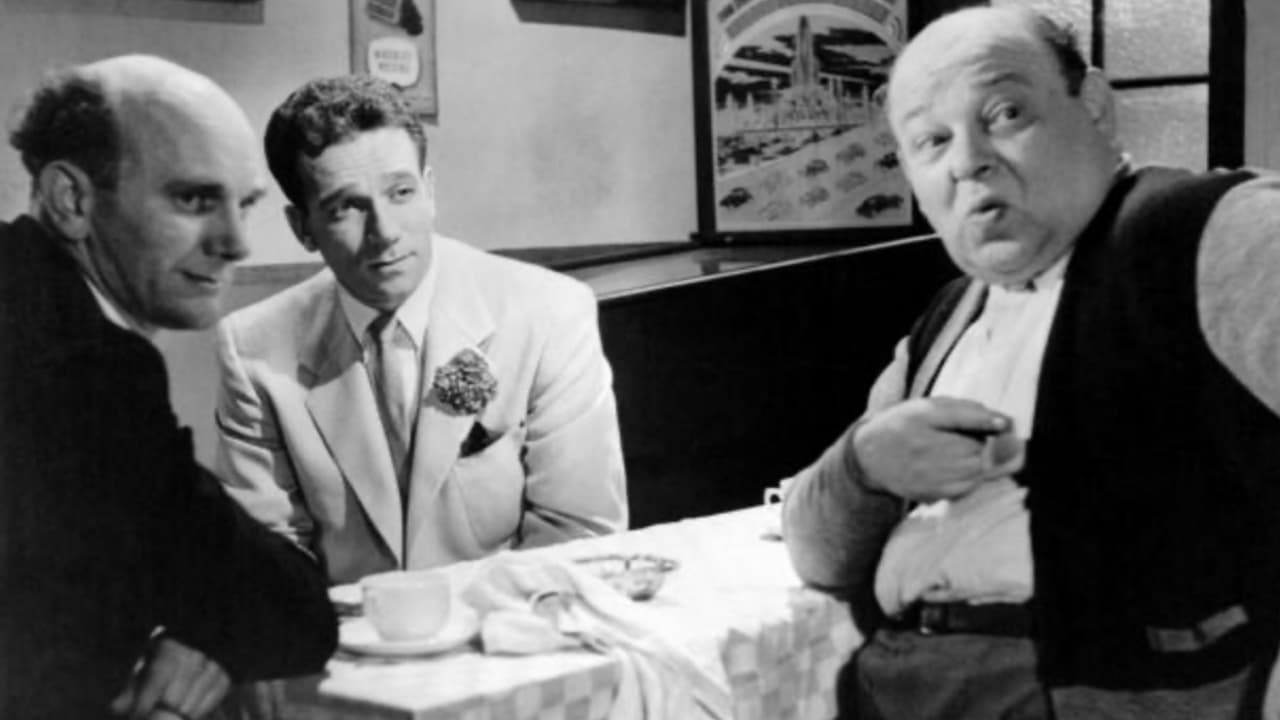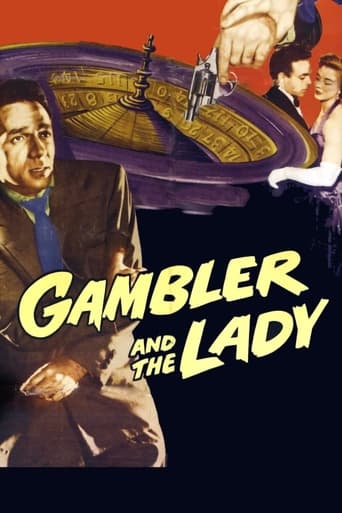



Let's be realistic.
Dreadfully Boring
This is one of the few movies I've ever seen where the whole audience broke into spontaneous, loud applause a third of the way in.
View MoreI think this is a new genre that they're all sort of working their way through it and haven't got all the kinks worked out yet but it's a genre that works for me.
View MoreAfter he is apparently shot and hit by a car, we meet shady Dane Clark (as Jim Forster). An American in London, Mr. Clark operates a successful gambling casino. Clark served three years in prison because he got "crazy drunk" and beat a man to death. He would like to be accepted in polite society, but Clark still has a temper. He also talks like a Warner Brothers movie gangster, which doesn't help in "manners school." Clark decides to end his affair with common nightclub dancer Kathleen Byron (as Pat) and get intimate with classy socialite Naomi Chance (as Susan Willens). Underworld types give Clark a hard time...Writer Sam Newfield delivers some interesting characters here, especially upper-crust Anthony Forwood (as Peter Willens), who could be a con-man, and mean-looking henchman Meredith Edwards (as Dave Davies), who has a devilish haircut. Still, the production is weak. The women should be more interesting, but are late and sketchy. It would have been nice to see more of both Ms. Byron and Ms. Chance. Byron could easily have been in more of the early scenes, to establish her upfront as Clark's precarious moll. The opening turns out to be a teaser; later in the film, we get see who wanted Clark dead. Sadly, you may not care.***** The Gambler and the Lady (12/26/52) Sam Newfield ~ Dane Clark, Naomi Chance, Anthony Forwood, Meredith Edwards
View MoreThere were lots of movies like "The Gambler and the Lady" back in the '50s: low-budget British noir-like films, sometimes detective stories, starring an American second or third-stringer, with the rest of the cast British. Often they're quite entertaining."The Gambler and the Lady" is one such film from 1952, produced by Hammer Film, and stars Dane Clark, Kathleen Byron, Naomi Chance, and Anthony Forwood. Forwood, by the way, was a very handsome man who was married to Glynis Johns and then became Dirk Bogarde's partner and manager for 30-plus years.Clark plays Jim Forster, an American running an illegal gambling houses in England. The story is told in flashback - when the film begins, we see Forster being hit by a car.Forster, a little rough around the edges, is a social climber, and in fact is taking lessons in social niceties so he can rub elbows with the mucky-mucks. He is dating a dancer at his club, Pat (Byron), who seems to want to get more serious than Forster. One night, she loses her temper at him and he walks out and won't have anything to do with her again.At his club, he meets Lady Willens (Chance), and though her brother (Forwood) who bounced a check at Forster's club is against him, she starts to see him. Pat becomes jealous and attempts to warn her off.That's on the personal end. On the professional end, some thug-types want to take over his clubs. When Lady Willens' father talks about a mining deal that promises to be lucrative, Forster thinks he's found a way into the social strata and out of illegal gambling.Dane Clark had a very prolific 45-year career which, once the '50s hit, was mostly in television. He started out in films as an ersatz John Garfield but never hit those heights. He is well cast in this. Naomi Chance was effective and beautiful as the society woman; she did a lot of this type of movie during her career. The patrician-looking Kathleen Byron (who appeared in "Saving Private Ryan") made a good shrew. Interestingly, all of the lead actors had long, very active careers.Hammer Films are low budget, yes, but they usually are atmospheric, as this one was, and entertaining. They attempted to copy the American films done by, say, RKO in the '40s, and while not entirely successful, you may enjoy this one.
View MoreIn 1950, American producer Robert Lippert formed a business alliance with Hammer studios. Under the agreement, Lippert would provide American acting talent - frequently shop-worn stars or just supporting actors who fancied a profitable trip out of the country - while Hammer would supply the rest of the cast and the production facilities. Together they would split the profits. Famous for his concern with the bottom line, Lippert produced over 140 films between 1946 and 1955, characteristically genre pieces such as I Shot Jesse James or Rocketship XM. For the British deal, most of the films were noir-ish thrillers - and include this title.Dane Clark, who appeared in several of these productions, plays the doomed gambler in question: a self made man, running a profitable London set up into which rudely intrudes his aspirational love life and the aggressive ambitions of some Italian gangster interlopers. His social climbing ultimately proves the straw that breaks the camel's back. Many of the British noirs interestingly import class considerations into the dramatic mix, concerns that are usually absent in the American model, and they are seen most strongly in this title. The gambler's end is ultimately determined by the suckering in of social mobility as much as the machinations of fate - but not before there is some effective sniping at the rudeness and untrustworthiness of the British ruling classes. Clark cuts a suitably doomed and somewhat pathetic figure as he struggle to gain acceptance.
View MoreThe good folk at IMDb don't seem to be aware that "Patrick Jenkins" is a pseudonym for Pat Jackson who also helped out around this period on "Scotland Yard Inspector", "Bad Blonde" and "The Saint's Return". Anyway, one can understand the wish for anonymity, as "The Gambler and the Lady" is not terribly interesting. True, the script has all the makings for classic film noir, but it doesn't come off, mainly because it wastes too much time on the dull Dane Clark character and his equally dull buddy, and fails to develop Kathleen Byron's role. Some attempts at humor are also misplaced. True, the climactic action has a bit of impact -- unbelievable though it is -- but by that time our interest has dissipated past the point of no return.
View More